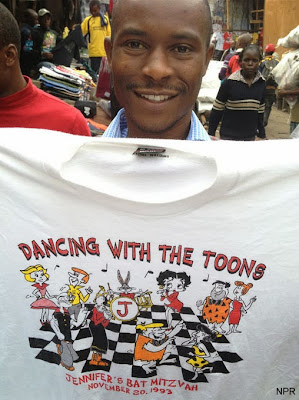Last night Drake hosted the year’s first Saturday Night Live show and Jewish and Black stereotypes were getting tossed a mile a minute during his opening monologue. The famous rapper opened the show by explaining that he’s from Canada, was in the TV show Degrassi Junior High, and that his mother is Jewish and his father is Black.
Tag: Bar Mitzvah
Metro Detroiters, as well as former Metro Detroiters, have found themselves getting lost in time on the Web since the Detroit Jewish News Foundation launched its digital archives in mid-November. Residing on the DJN Foundation’s website at www.djnfoundation.org, the archives have allowed local members of the Jewish community to scratch their nostalgia itch by searching for friends and family in the archives’ search function. Every weekly issue of the Detroit Jewish News over the past seven decades is included in the digital archives and even advertisements can be searched.
Arthur Horwitz, publisher of the Detroit Jewish News, recognized the importance of digitizing the thousands of old issues of the paper after a devastating fire occurred in the Detroit Jewish News offices back in 2002 and destroyed nearly all of the paper’s print archives. Horwitz and the new nonprofit foundation turned to Media Genesis, an internet services provider, to create the searchable index on the new website which lets users perform quick and accurate searches on the more than 260,000 dating back to 1942. The archives are available to the public at no cost and they have already proven useful to local historians, educators, students and community leaders.
Like internet search engines such as Google, Yahoo or Bing, the DJN Foundation’s digital archives are fully searchable by date, name, and other keyword searches including advanced Boolean searches, which are a type of search allowing users to combine keywords with operators such as “and,” “not” and “nor” to produce more relevant results.
Bar Mitzvah preparation has come a long way since the days of the record album. In the 1980s and early 1990s cantors and bar/bat mitzvah tutors recorded their voices onto audio cassette tapes so their twelve-year-old students could walk around the house listening to the chanting on a Sony Walkman. In fact, I remember many nights falling asleep with my black foamy headphones on while I listened to the late Cantor Larry Vieder of Adat Shalom Synagogue repeating the Torah trope (cantilation notes) and the long haftorah for my bar mitzvah. The mid-1990s saw the transition from the audio tapes to music CDs when bar mitzvah tutors began hooking up microphones to the computer and recording the bar mitzvah portion onto blank CD-Roms.
In recent years we’ve seen bar and bat mitzvah students receiving the audio version of the haftorah and blessings they need to learn via email, a concept that anyone over the age of thirty would find amazing.
The way Jewish teens prepare for their bar or bat mitzvah has changed dramatically thanks to technological innovation. Not only has the audio format changed over the years, but so too has the way in which these young men and women are being tutored.



